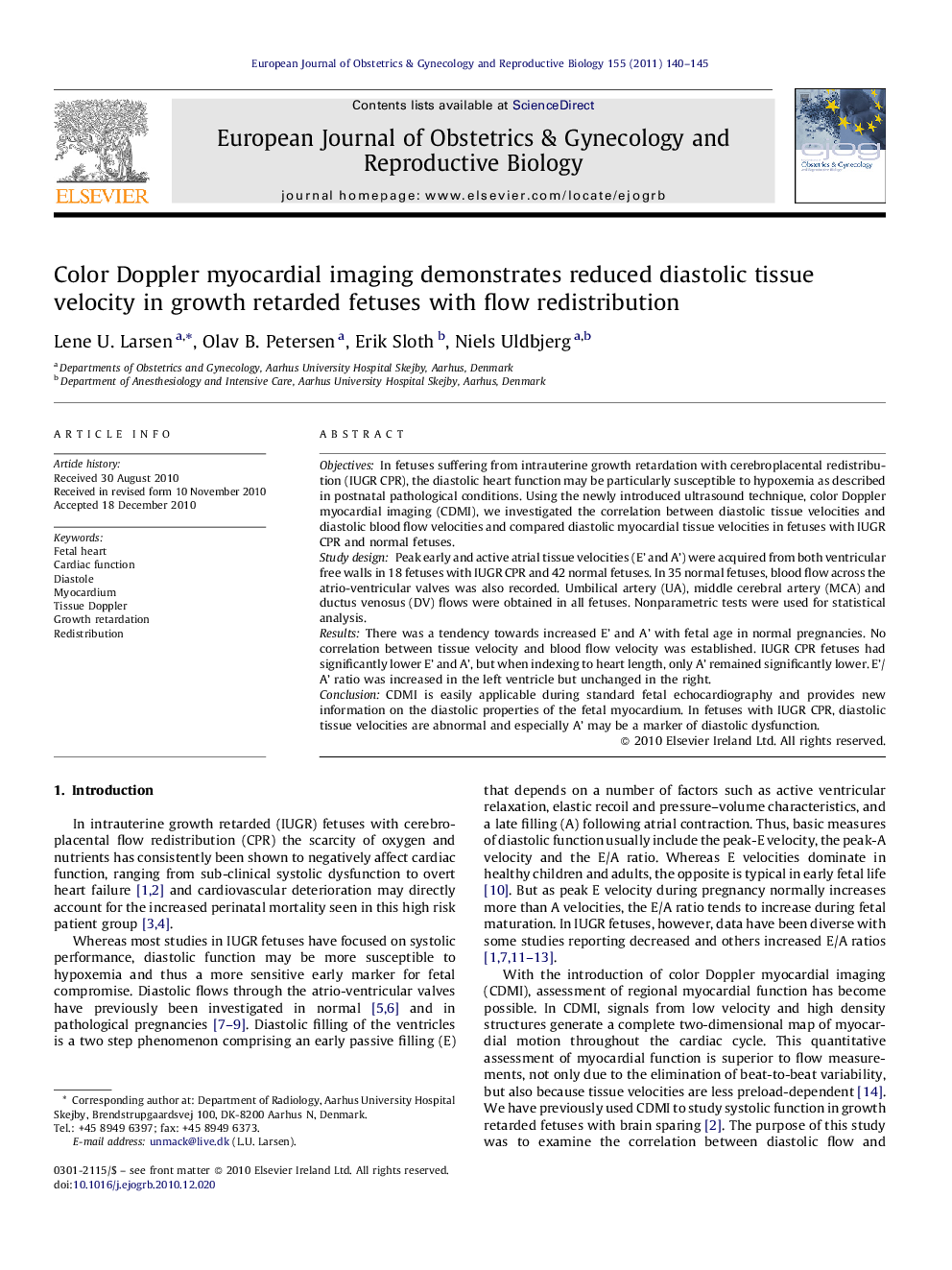| Article ID | Journal | Published Year | Pages | File Type |
|---|---|---|---|---|
| 6174597 | European Journal of Obstetrics & Gynecology and Reproductive Biology | 2011 | 6 Pages |
ObjectivesIn fetuses suffering from intrauterine growth retardation with cerebroplacental redistribution (IUGR CPR), the diastolic heart function may be particularly susceptible to hypoxemia as described in postnatal pathological conditions. Using the newly introduced ultrasound technique, color Doppler myocardial imaging (CDMI), we investigated the correlation between diastolic tissue velocities and diastolic blood flow velocities and compared diastolic myocardial tissue velocities in fetuses with IUGR CPR and normal fetuses.Study designPeak early and active atrial tissue velocities (E' and A') were acquired from both ventricular free walls in 18 fetuses with IUGR CPR and 42 normal fetuses. In 35 normal fetuses, blood flow across the atrio-ventricular valves was also recorded. Umbilical artery (UA), middle cerebral artery (MCA) and ductus venosus (DV) flows were obtained in all fetuses. Nonparametric tests were used for statistical analysis.ResultsThere was a tendency towards increased E' and A' with fetal age in normal pregnancies. No correlation between tissue velocity and blood flow velocity was established. IUGR CPR fetuses had significantly lower E' and A', but when indexing to heart length, only A' remained significantly lower. E'/A' ratio was increased in the left ventricle but unchanged in the right.ConclusionCDMI is easily applicable during standard fetal echocardiography and provides new information on the diastolic properties of the fetal myocardium. In fetuses with IUGR CPR, diastolic tissue velocities are abnormal and especially A' may be a marker of diastolic dysfunction.
